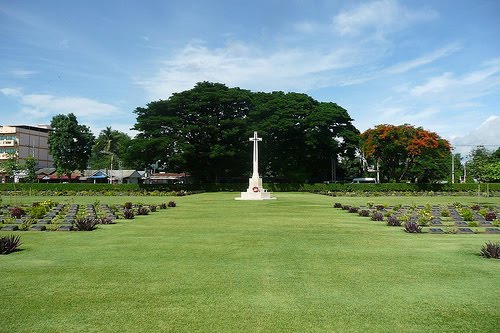Arriving in KANCHANABURI
Posted by
Nicola Morrison
on Sunday, 1 November 2009
Labels:
Kanchanaburi
/
Comments: (0)
Hell Fire Pass
Posted by
Nicola Morrison
Labels:
Hellfire Pass
/
Comments: (0)
Hellfire Pass was a particularly difficult section of the line to build due to it being the largest rock cutting on the railway, coupled with its general remoteness and the lack of proper construction tools during building. A tunnel would have been possible to build instead of a cutting, but this could only be constructed at the two ends at any one time, whereas the cutting could be constructed at all points simultaneously despite the excess effort required by the POWs. The Australian, British, Dutch and other allied Prisoners of War were required by the Japanese to work 18 hours a day to complete the cutting. Sixty nine men were beaten to death by Japanese and Korean guards in the six weeks it took to build the cutting, and many more died from cholera, dysentery, starvation, and exhaustion. However, the majority of deaths occurred amongst labourers whom the Japanese enticed to come to help build the line with promises of good jobs. These labourers, mostly Malayans (Chinese, Malays and Tamils from Malaya), suffered mostly the same as the POWs at the hands of the Japanese. The Japanese kept no records of these deaths.
The railway was never built to a level of lasting permanence and was frequently bombed by the Royal Air Force during the Burma Campaign. After the war, all but the present section was closed. There are currently no plans to reopen it.
http://www.anzacday.org.au/history/ww2/anecdotes/deathrailway.html
http://www.hellfirepass.com/
The railway was never built to a level of lasting permanence and was frequently bombed by the Royal Air Force during the Burma Campaign. After the war, all but the present section was closed. There are currently no plans to reopen it.
http://www.anzacday.org.au/history/ww2/anecdotes/deathrailway.html
http://www.hellfirepass.com/
Erawan Falls
After such a great weekend we spent some time at the Erawan Falls which were SPECTACULAR!
Covering over 500 sq.km, Erawan National Park is surrounded by stunning scenery and houses the famous Erawan waterfall. The Falls has seven levels dropping down over 1,500m and is regarded as one the more beautiful in Thailand.












































